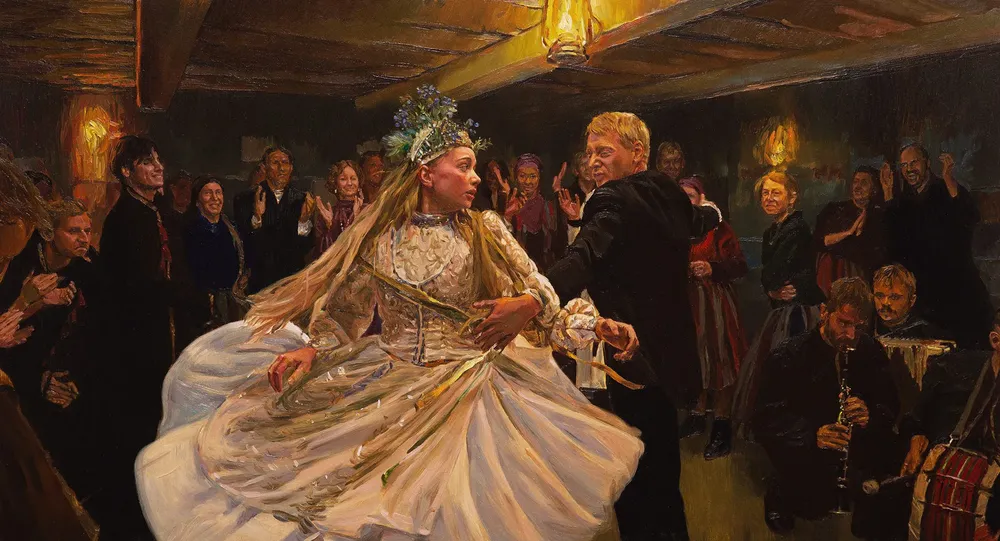
in the name of the earth
In the name of the earth , the new work by Dorotea Kobiela Welchman and Hugh Welchmann, Polish filmmakers who five years ago, with Loving Vincent , surprised us by giving life to Van Gogh's paintings through an elaborate technique that hand-colors the Scenes previously filmed with real actors, he once again displays sensitivity and ingenuity when filming, using the same technique, a rural drama based on a novel by Nobel Prize winner Wladyslaw S. Reymont.
REVIEWS Javier López Iglesias
The film tells the story of the beautiful Jagna, a young woman from a humble family forced by her family to marry an authoritarian landowner much older than her. Her sad fate, in the small town in the Polish countryside where she lives, seems marked by the fact that she is in love and maintains a secret relationship with the son of the old man she has to marry.
Over time, Jagna becomes the center of everyone's envy and hatred. From then on he must fight to maintain his independence in a place marked by gossip and neighborhood disputes, the strict rules derived from a tradition anchored in incomprehension and a deep and immovable patriarchy.
Responsible for direction and script, the Welchmann couple returns, as they did in 2018 with Loving Vincent , to captivate us with a high-quality cinematographic product. In the Name of the Land was first filmed with actors in real settings and then painted in oil, frame by frame, by more than one hundred artists in studios in Poland, Serbia, Lithuania and Ukraine inspired by different artists and pictorial styles, especially pre-impressionists, from the late 19th and early 20th centuries.
The result immerses us in the complex atmosphere of the novel The Peasants , by the Polish writer WS Reymont, who would receive the Nobel Prize in 1924 for his detailed descriptions of the characters and the atmosphere of rural life of his time.
When referring to what encouraged her to face the challenge of this film, Dorotea Kobiela comments: “The novel portrays life in a peasant village in Poland, but it is easy to deduce that what is told could happen anywhere and at any time. . Furthermore, it seems to me that the problems he addresses are still current, issues that we struggle with today, because the author x-rays the human condition: both the good and the darker aspects of the ordinary people we come across every day. days. I was very interested in the approach to inequalities between men and women. Women condemned by patriarchy and its rules, where women also turn against other women; harassment. These are things that unfortunately still happen today, so showing these issues and these people on the big screen could make us question whether or not we have changed, and how much, in these last 120 years.”
Poland's Oscar candidate, In the Name of the Earth is, ultimately, an attractive proposal about female desire, passion, the rupture of what is established and the fight against social impositions.









